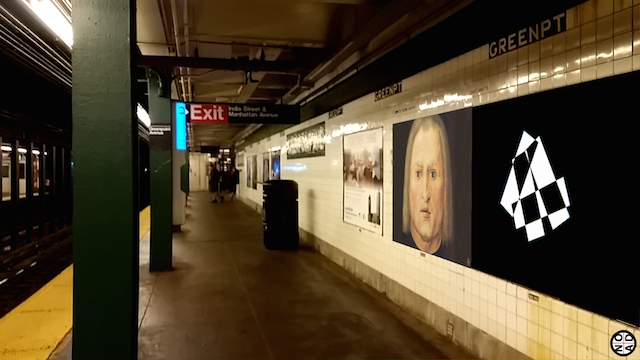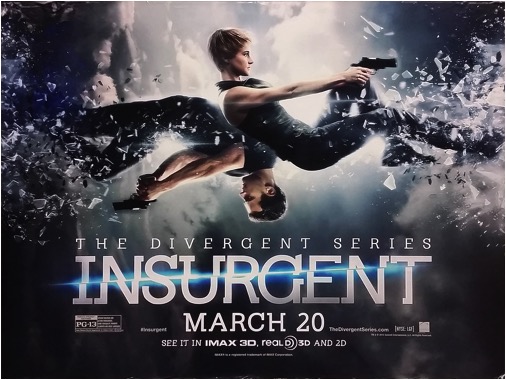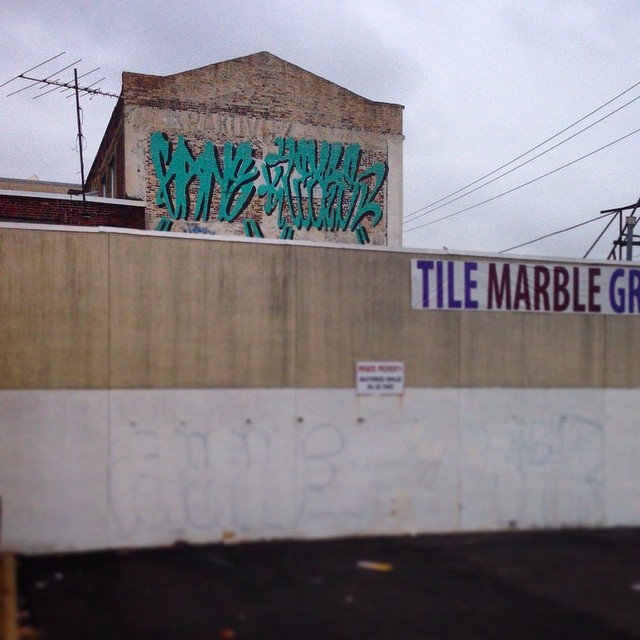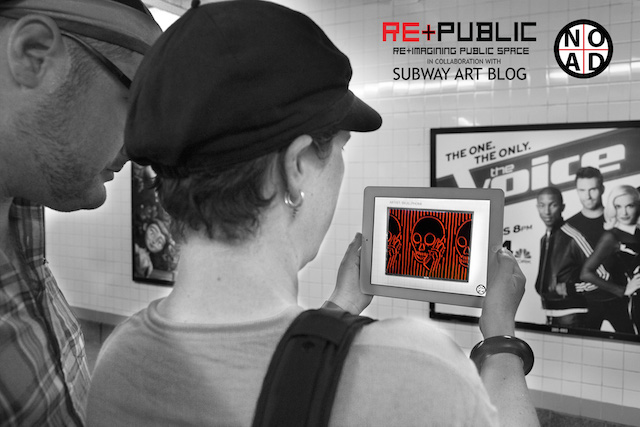
Wow. That headline is full of some jargon and gibberish… Sorry. Let me explain…
Today marks the launch of the latest exhibition in NO AD, a new evolution for the smartphone app that simulates a world in which New York City’s subway station advertisements are replaced with public art. NO AD, which I’ve written about before, uses augmented reality to digitally replace the ads on your phone’s screen. Here’s how it works.
NO AD has become a really interesting exhibition space, somewhere between a digital exhibition and a guerrilla street art exhibition. The very platform is an artwork, so NO AD’s art exhibitions exist within another work of art, and the platform gets you thinking as much as the art it displays.
I’m honored that the NO AD creators (between PublicAdCampaign, The Heavy Projects, and The Subway Art Blog under the umbrella of Re+Public) asked me to curate the first exhibition NO AD made up entirely of animated GIF art. That exhibition, titled Bob-omb, launched today and includes artwork from by The Barkers, Caitlin Burns, Dave Whyte, Hrag Vartanian, James Kerr – Scorpion Dagger, Jeremyville, Maori Sakai, Molly Soda, Paolo Čerić aka Patakk, Ryan Seslow, The Current Sea, YoMeryl, and Zack Dougherty.
In the past, the vast majority of content in NO AD has been static images, but Bob-omb takes full advantage of the platform by focusing exclusively on animated pieces, transforming static advertisements into dynamic artworks.
Bob-omb is an effort to weaponize GIF art as a tool for reimaging public space while simultaneously highlighting the variety and depth possible with the medium. The artists range from filmmakers to illustrators to journalists, and their work varies from hyper-short documentary videos to abstract digital illustration.
To view Bob-omb, simply download NO AD for your iPhone or Android device (or update it if you’ve already got the app on your phone), find a New York City subway station, open the app, and start pointing your phone at the ads. Or download/update the app and try the test image below.
I want to give a big thank you to all of the artists in Bob-omb and the team behind NO AD for this opportunity.

Images courtesy of NO AD



